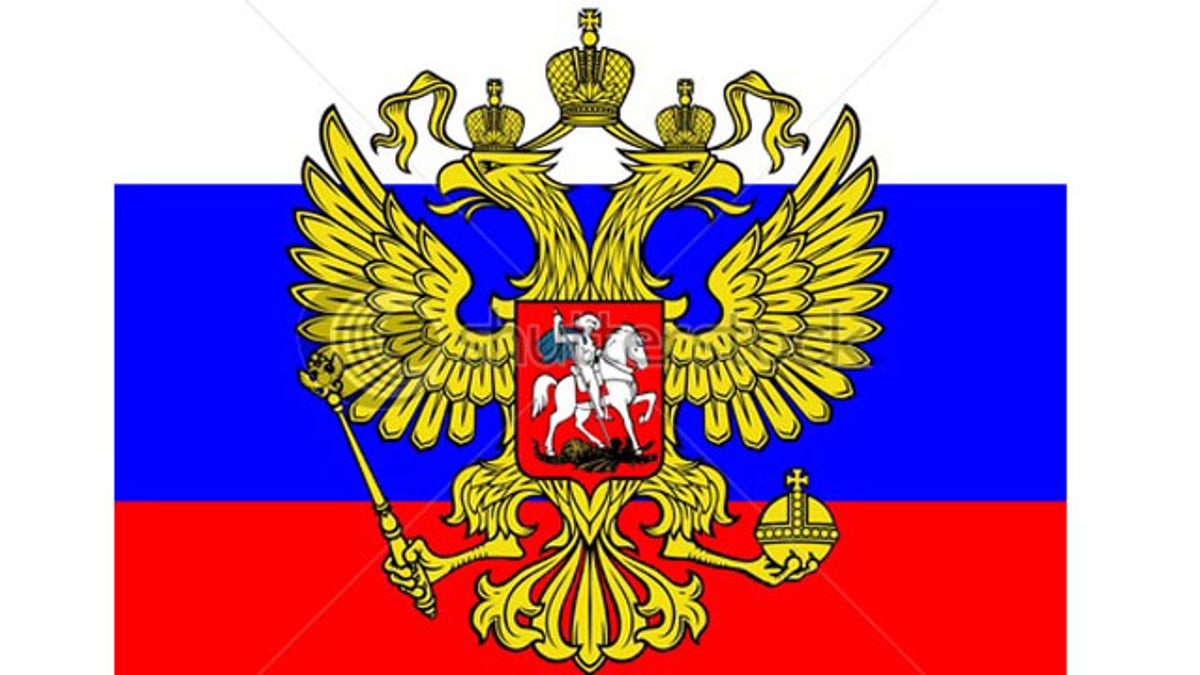
Russian emblem
Was it a call to bring the revolts and violence of the “Arab Spring” now sweeping the Middle East to Russia?
That is the question that swirled throughout Moscow when a top imam called for the addition of the Islamic crescent moon symbol to the Russian emblem.
The surprise call by Talgat Tadzhuddin during an interview with a leading Russian newspaper was met with alarm because the imam heads the Central Spiritual Association of Muslims of Russia, a major regional Islamic association.
As quickly as the word of the proposal became public it ignited a wave of condemnation.
“According to this logic,” Georgiy Vilinbakhov, head of Russia’s Heraldry Service argued, “we must change the name of Russia, put a green stripe on or flag and move the capital city from Moscow to somewhere on the border between Europe and Asia.”
The fears of renewed tension between the state and the Islamist were exacerbated because Moscow had just seen serious clashes between Islamic and Russian youths.
Moreover, Russia has been involved in a number of disputes along its southern tier that pit predominately Muslim populations seeking autonomy and Islamic governance against Russian troops.
In Chechnya, for example, Russia has fought two brutal wars and been the subject of major terror attacks by Islamic separatists from the region. The two most significant were the 2004 attack on a school in Beslan that left more than 300 dead and the 2002 siege at a Nord Ost theater by 50 Chechen soldiers that left at least 170 dead.
Both attacks left relations with Russia’s Islamic community in a fragile state.
In his interview, Tadzhuddin said, “We are asking for one of the heads (of the Russian state emblem, a double-headed eagle) to be topped with a crescent moon and the other to be topped with a Russian Orthodox cross. All the crowns on the coat of arms -- two on the heads of eagles and one above the middle -- are topped by crosses. But Russia has 20 million Muslims. That is 18 percent of the population.”
Tadzhuddin also said that he had presented a sketch of the proposed change to both Russian President Dmitry Medvedev and Prime Minister Vladimir Putin. The Kremlin has not commented on the issue.
In the days since the proposal was made public there have been no public protests or support for the changes anywhere in Russia. And other major Muslim groups inside Russia quickly rejected the proposed changes to the emblem, which was adopted in 1472 under the reign of Ivan III after his marriage to a Byzantine princess. It was replaced when communists took over in 1917 and reestablished in 1993 after the fall of the Soviet Union.
Muhammedgali Khuzin, head of the executive committee of the Russian Association of Islamic Consensus, a much larger Muslim organization, said the proposal would hurt cultural harmony, unleash xenophobia and be generally counterproductive.
He also intimated that any changes to the Russian emblem were bound to create conflict.
The Russian Orthodox Church also rejected the idea, but suggested that flags of predominately Muslim areas might choose to add the crescent to their regional flags.
Experts in the U.S. and in Russia agree that there is little likelihood that the proposal was meant to spread conflict.
Eric McGlinchey, an expert on Central Asia and professor at George Mason University, said that the fact that Tadzhuddin was able to meet with Putin and Medvedev made it unlikely that there was more to the proposal than “an effort to recognize cultural diversity in Russia.”
“The Central Spiritual Association of Muslims of Russia has a long history of being close to the state. It was closely affiliated with he old Soviet regime and, while not exactly a state organ, it has close ties to the government,” he said. “It is not a call for revolt.”
“I don’t think that Putin and Medvedev would meet with someone who was likely to call for Islamic turmoil in their borders,” he added.
Peter Byrne, a journalist who has worked extensively throughout Russia, said simply, “It is not an issue here.”
